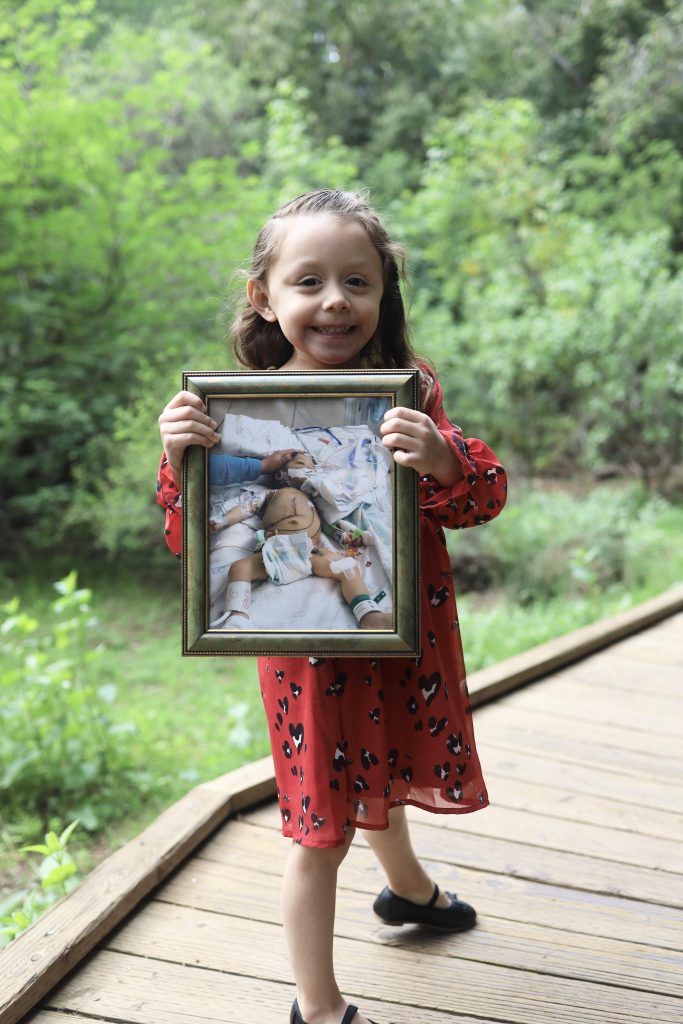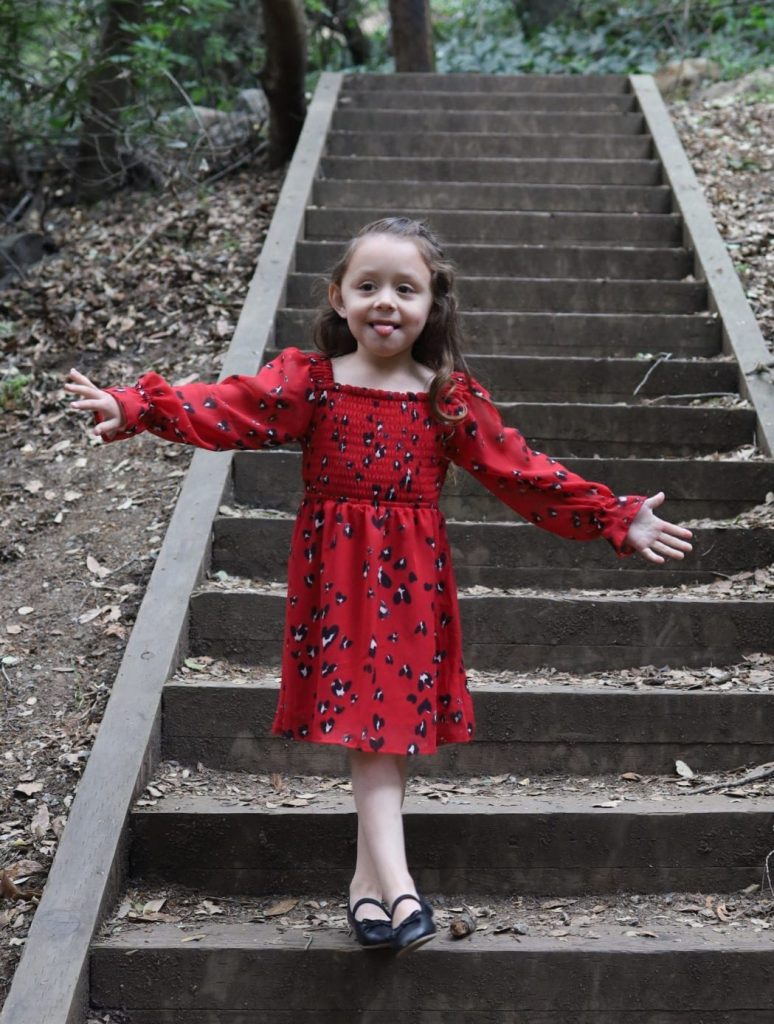Penelope L.
Biliary Atresia

Penelope was born on November 19, 2015 born at 41 weeks. At the end of January, at almost two months, we went in for a routine two-month checkup. As we walked into our checkup room the medical assistant let us know she wouldn’t be taking any weight or length until the doctor came to see her color (the medical assistant said her color was off too yellow for her liking). As she left to get the doctor, we didn’t think much of it. What off color? She wasn’t yellow, that was her normal skin tone. The doctor was concerned and recommended blood work be done. She let us know that other than her jaundice, Penelope looked strong and healthy. Blood work told us her liver numbers were off.
More blood work was needed and we were told her liver was working overtime. A HIDA scan was then done. We were then introduced by a pediatric GI specialist to a disease named Biliary Atresia. We were told the only way to save OUR baby girl was going through a Kasai Procedure. At just 9 weeks, our baby girl was going to have to go through her first surgery.
We learned that even after the Kasai, it was more than likely she would need a liver transplant by her first birthday.
The Kasai was a success and we went home after a few days, hopeful for the future. We had routine blood work and visits to a GI specialist every few weeks. We were hopeful she could make it past her first or second birthday with her native liver, but we always had that thought in the back of our minds wondering when that time would come.
Two months post-Kasai, were going great. Her GI was impressed of how great she was doing. Sadly, it all ended at three months. Penelope started having pale colored stools again, and one night she woke up with a high temperature; we all knew something wasn’t right. We were rushed into the emergency room and test upon tests kept coming out negative for different infections. After days of being there, our GI walked in and let us know that her liver numbers were becoming bad again and that it was time to see Stanford for a liver transplant evaluation.
Penelope was sick and she had slowly turned into those babies that I had dreaded to look at online. Her skin was yellow—almost green—her eyes were yellow, her belly was swollen with her belly button being popped out, and her legs and arms were skinny. She was no longer thriving. She was a 5 month old weighting no more than 11 pounds.

We were transferred to Stanford where staff would come in and out of our room informing us of what we should expect during the evaluation. After a few days of different tests, we were told her PELD score was a 14 out of 40, and that she was a great candidate for a liver transplant. We also learned we should expect a wait time of about six months for a liver. Her blood type was rarer than most, which could be a blessing or a curse.
Penelope was malnourished and needed to be on thousand of units of different vitamins. It was a huge slap in the face hearing a doctor tell you your daughter was malnourished. We were trying our best, but her liver was no longer helping her absorb anything.
The doctors let me know that a PICC line would be needed for lipids. This was overwhelming—the thought of a transplant and waiting for the call was stressful and scary. Now the thought that I would be “plugging” her in for lipids at home for 12 hours at night added extra stress.
That Sunday we were called in for her PICC line. We spend the night at the hospital and her PICC line would be put in Monday morning. As I sat there feeding my baby after her PICC line procedure, a parent mentor walked in. We talked about her daughter, who had BA twenty years ago and is now a healthy twenty-something college student. We talked about the future for Penelope, and what I should expect to see in her before and after the transplant. The most important part for me was how Penelope’s life would be normal. Maybe not normal for other people, but it would be OUR normal. At that point I was at peace with everything. Penelope was strong and I knew she would be okay. We said our goodbyes to the parent mentor as she left. Penelope’s grandma and daddy walked in at the same time my phone went off. It read Stanford operator, which was weird since we were still inpatient. I answered, and the voice on the other side said “hey I know you guys are in-patient but I just wanted to let you all know we have a liver for Penelope.”

I was shocked because it had only been a 8 days since she was put on the list. My emotions were mixed as we all cried. We were happy then cried again. Sadness came again thinking of the donor and the donor family. My little girl’s life would be saved, but at the same time another family was going through what could have happened to Penelope.
Two days later, the day before she turned 6 months, we gave Penelope away to the transplant team who would be performing her life-saving liver transplant. She went in yellow as can be and she came out white. We were so used to seeing her so jaundice we were happy to see how amazing her color was hours after her transplant. We were so proud of our little girl.
Penelope was strong. She was eating normally, which was said to be the hardest part after transplant. After a total of eight days, we went home with our baby girl.
Life right after transplant wasn’t easy. Having to give a six-month-old 12 different medications was tough. We would end up with a face full of medicine. Little by little, life became easier. Less blood work, less medicine, less clinic visits. Life today is amazing, and we are grateful and blessed to have gone through this process as fast as we did. Penelope is a happy, smart, thriving, energetic, and amazing little girl. This wouldn’t have happened if it wasn’t for the selfless act from our donor family. We will forever be grateful for them. Today all we know is that Penelope’s new liver came from a larger child. We hope to one day learn our donors story.
One thing has that helped me through our journey has been social media. I remember feeling during the early days. When I finally had the courage to go on social media and find moms like me it made everything better. I knew I wasn’t alone. Most importantly I saw the smiling happy faces of kids just like Penny, who were living a happy healthy life post transplant.
Last updated on July 11th, 2022 at 04:10 pm